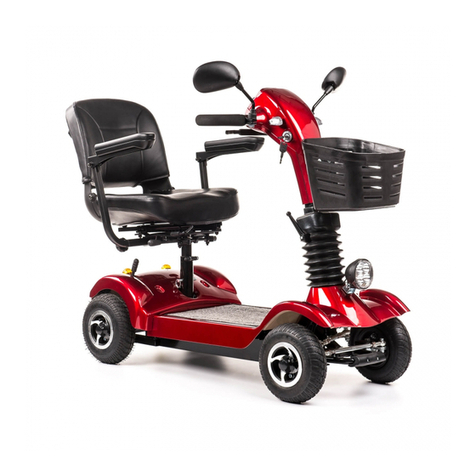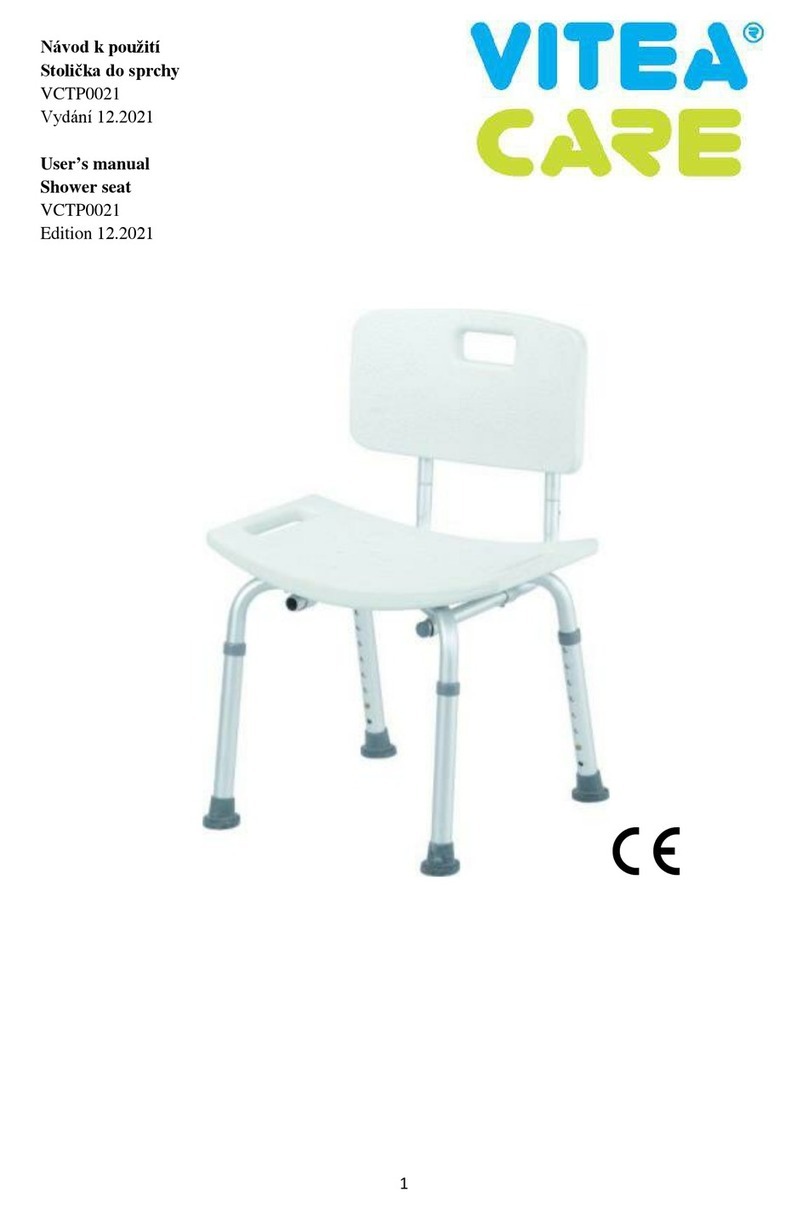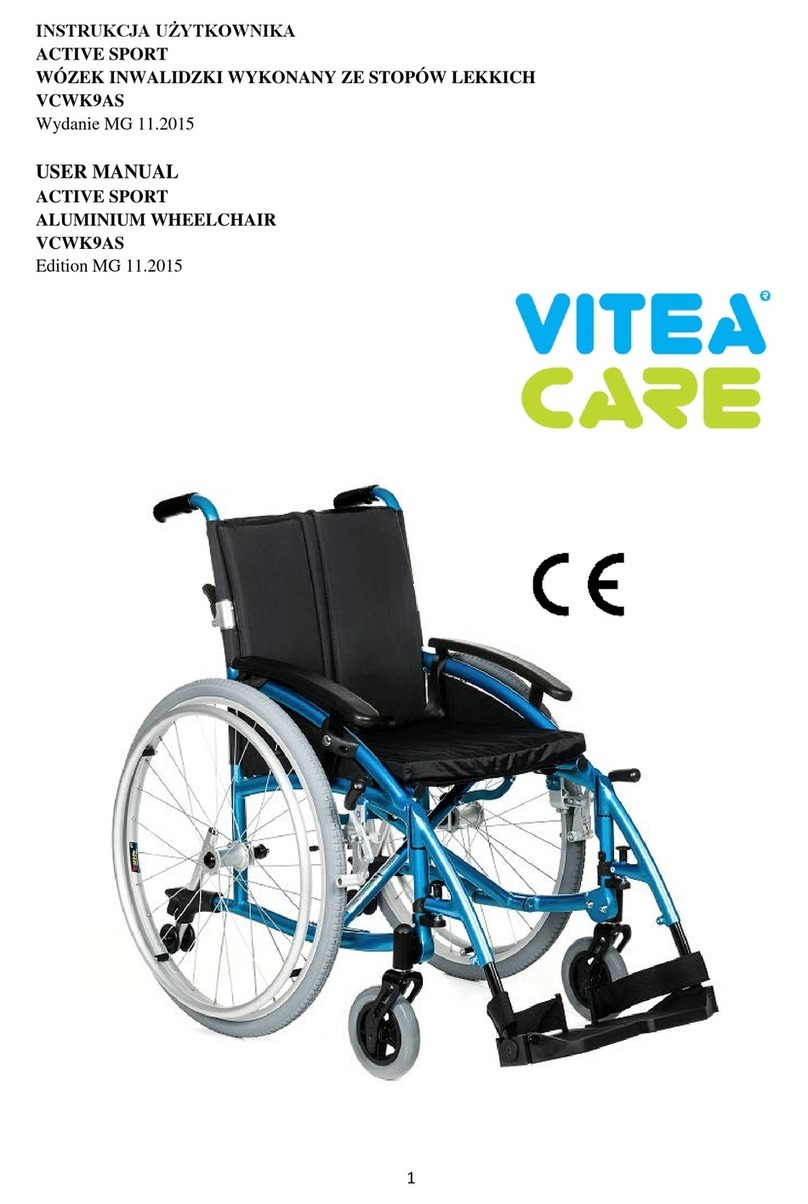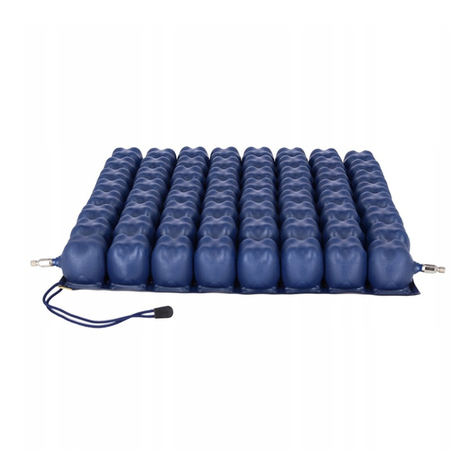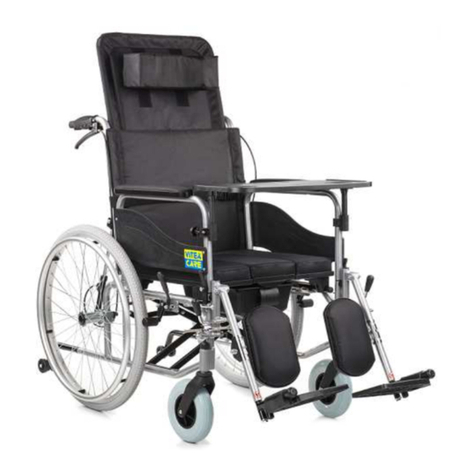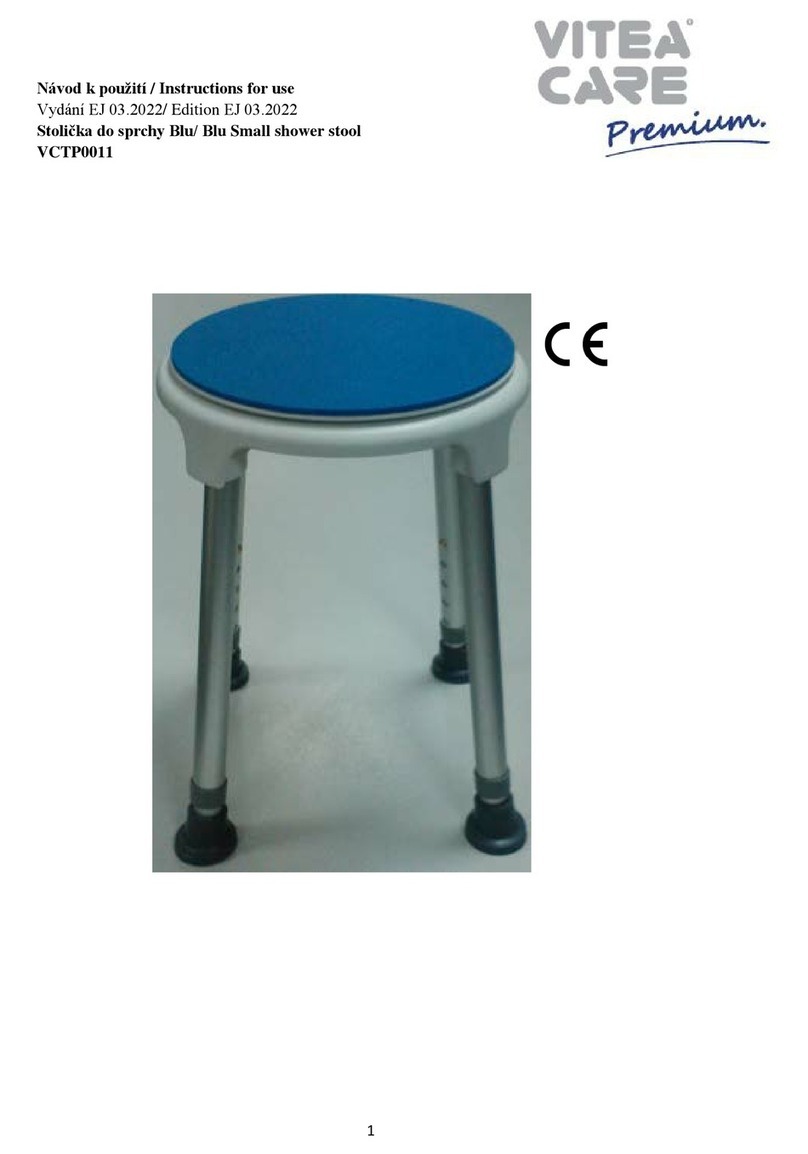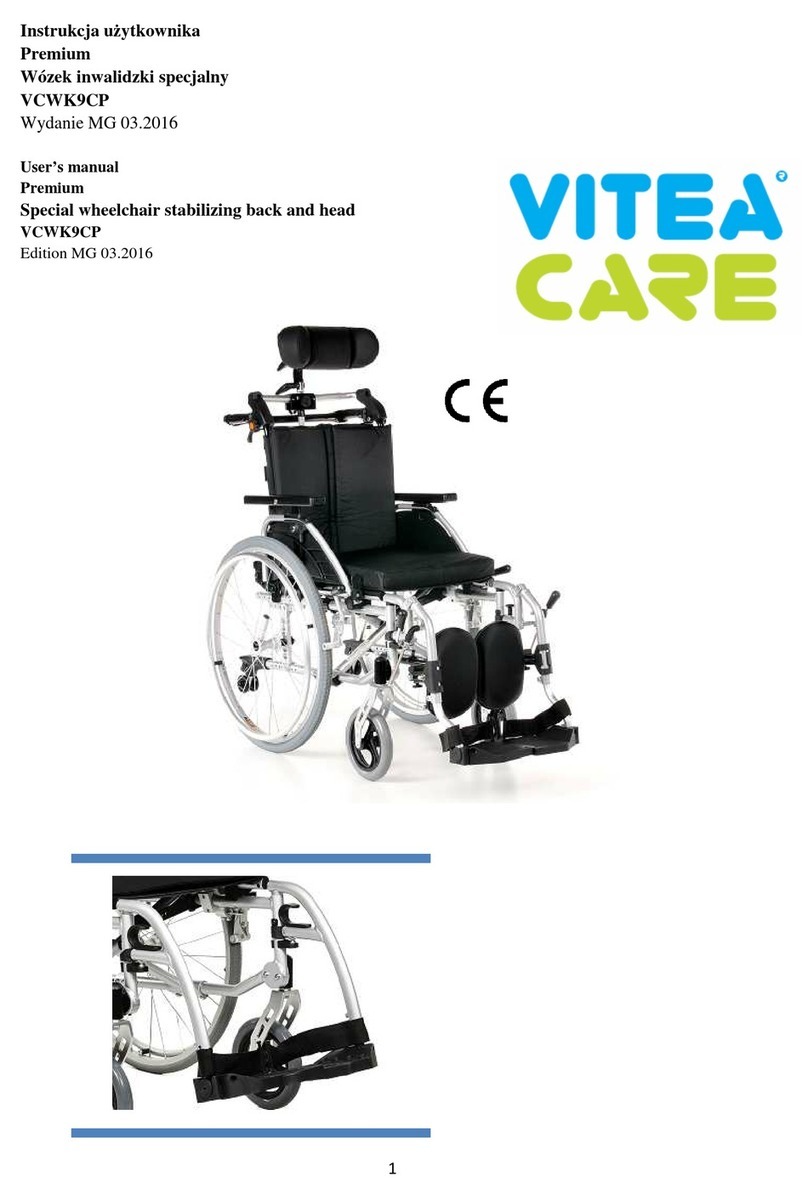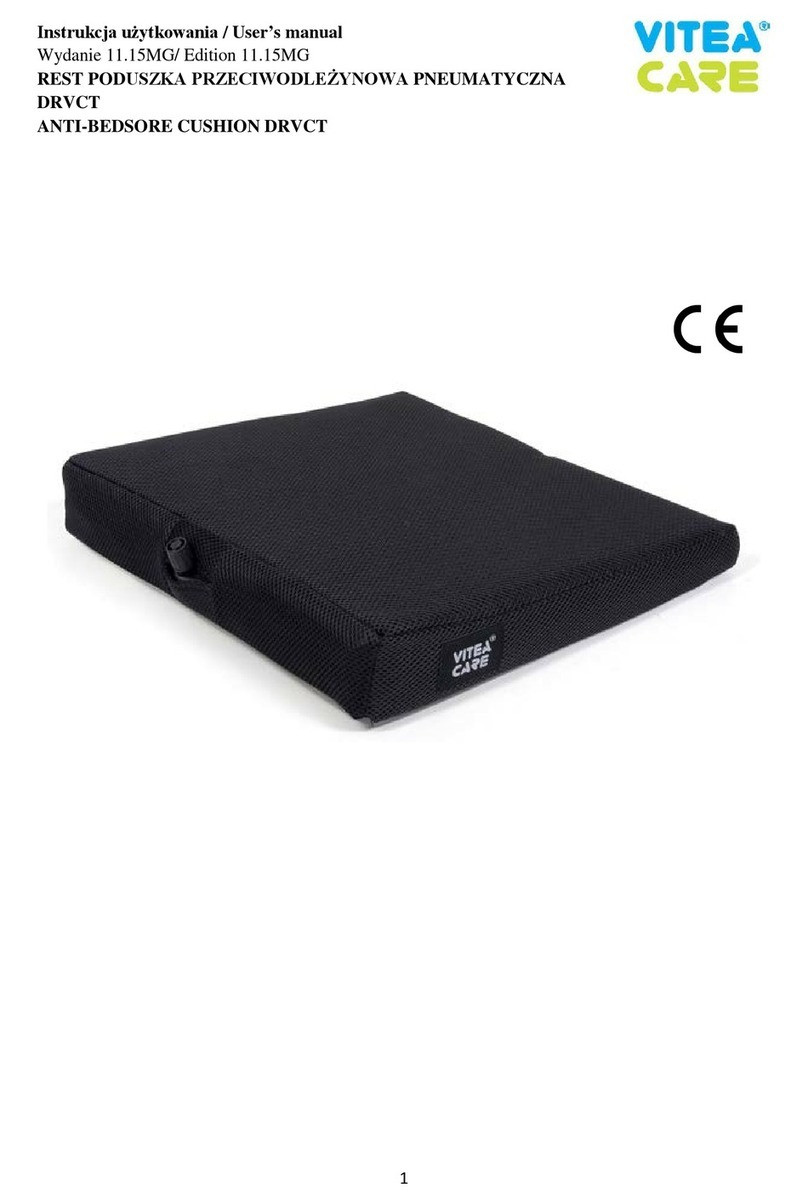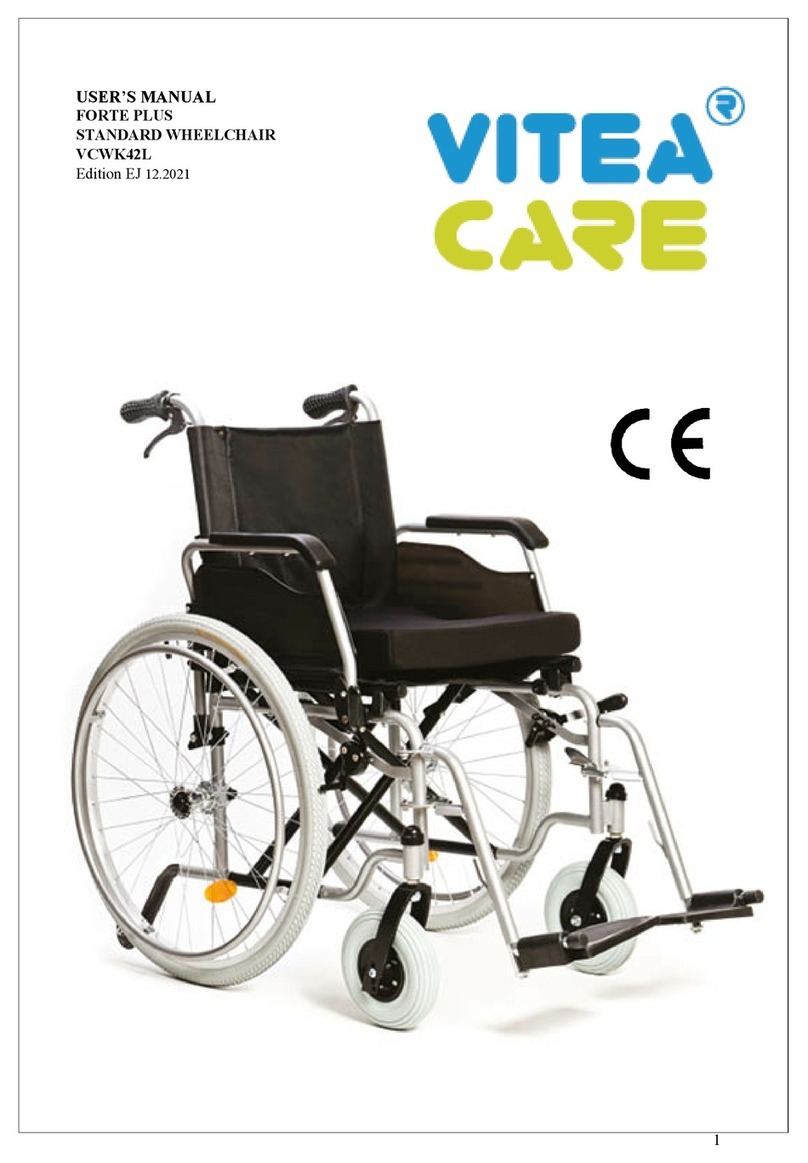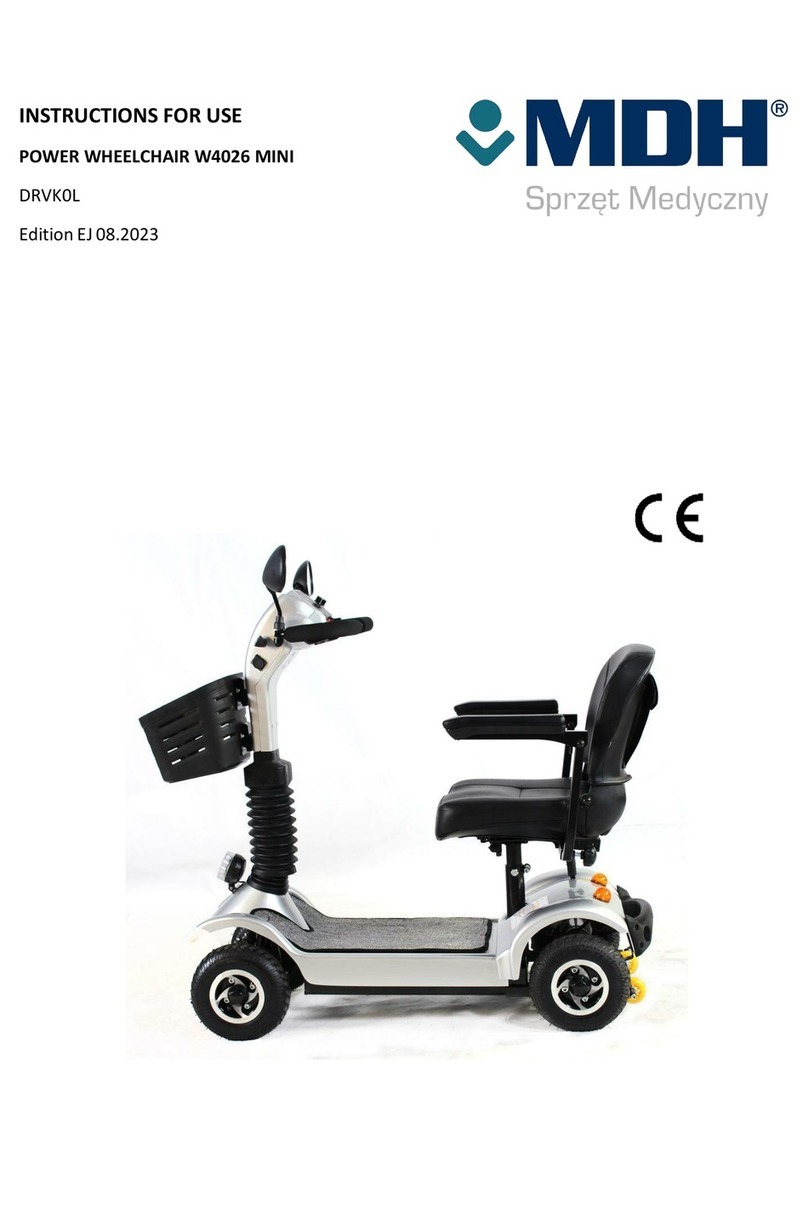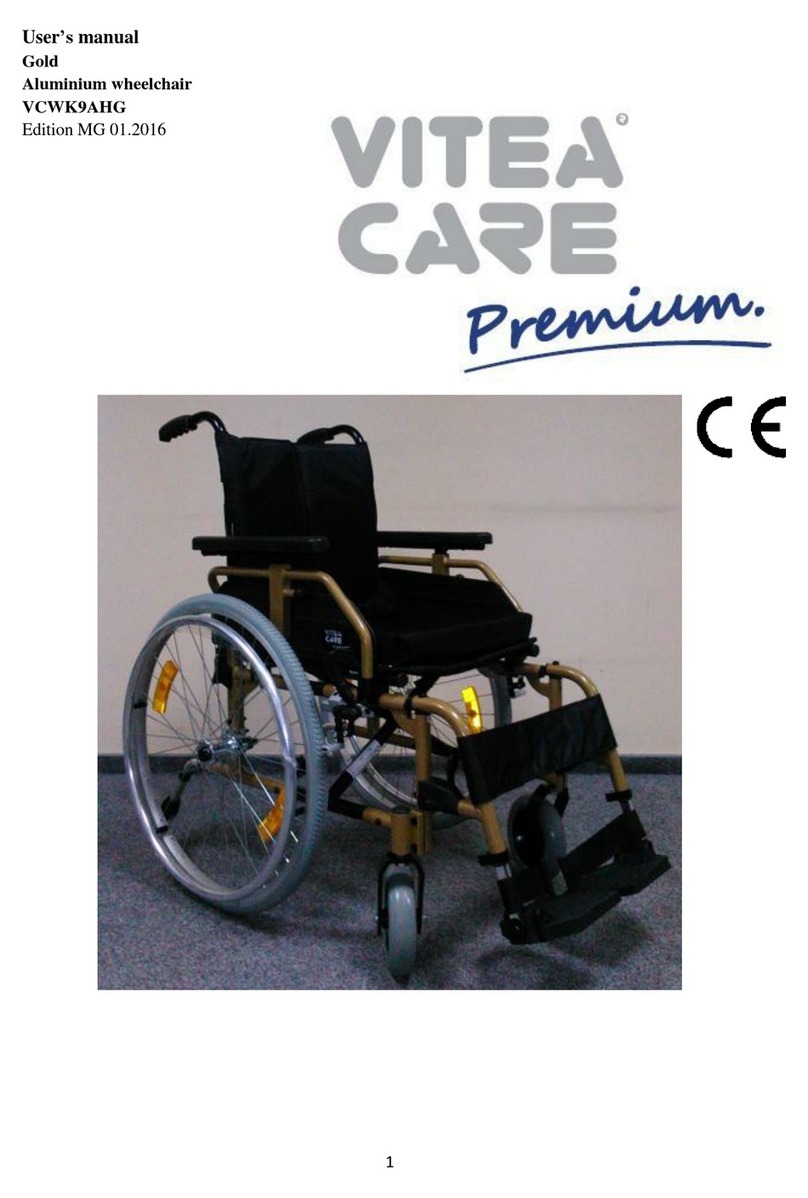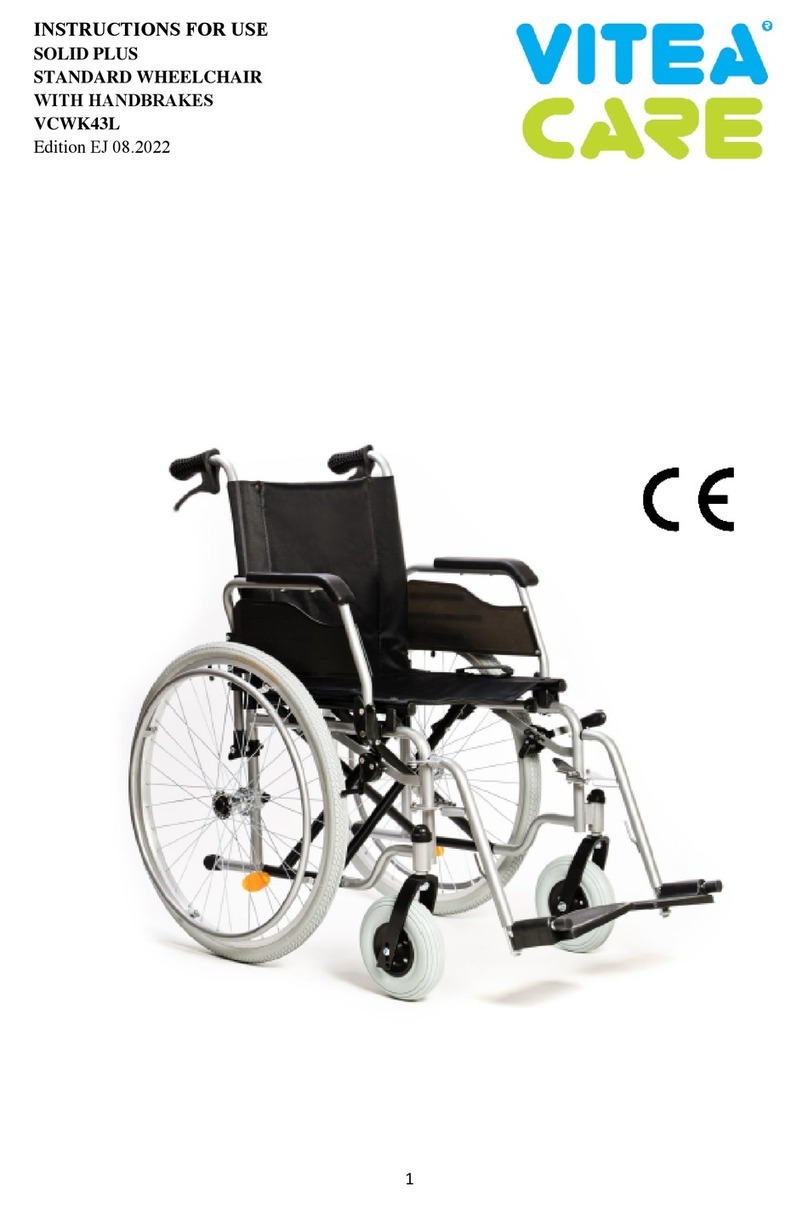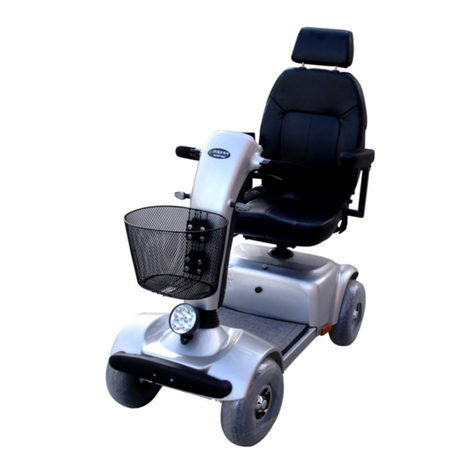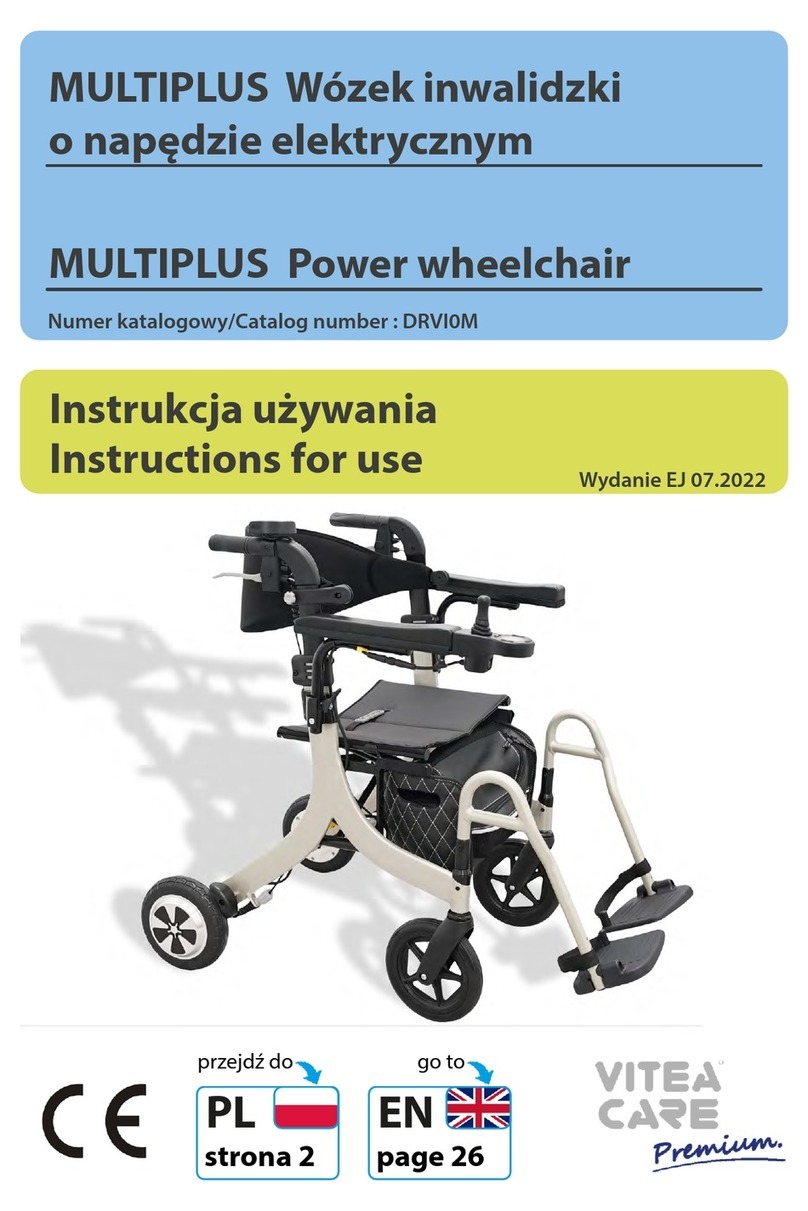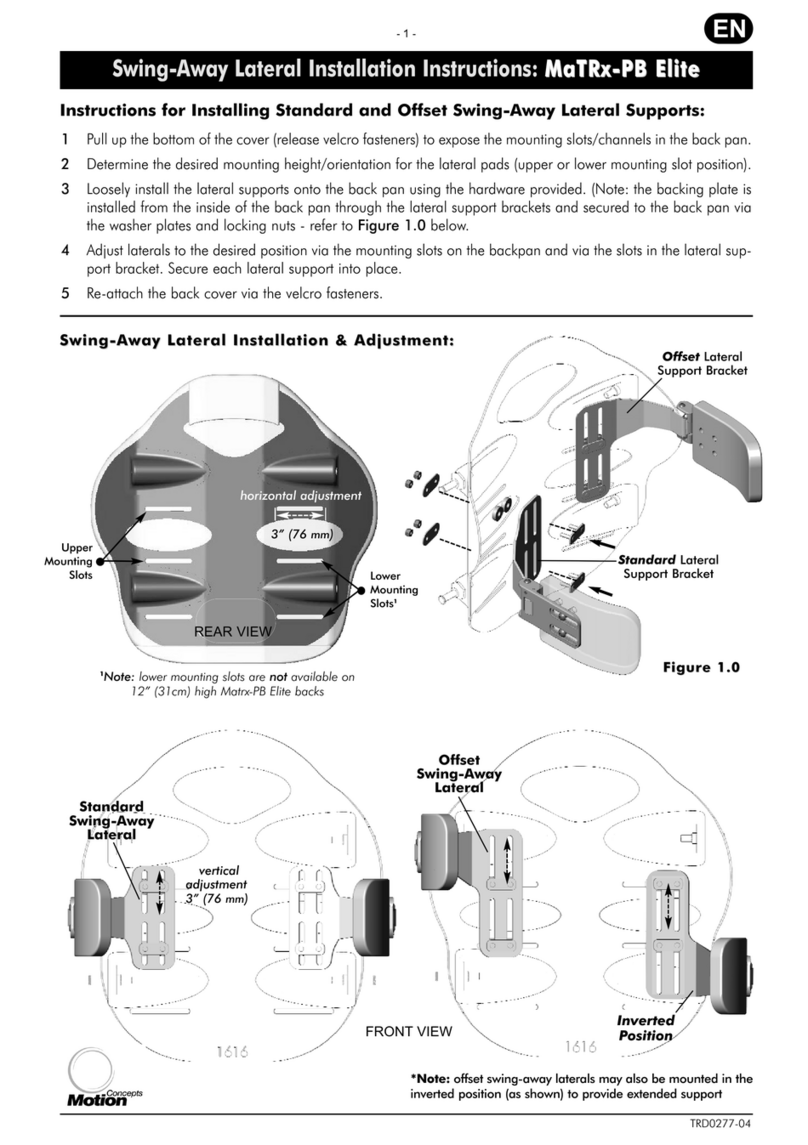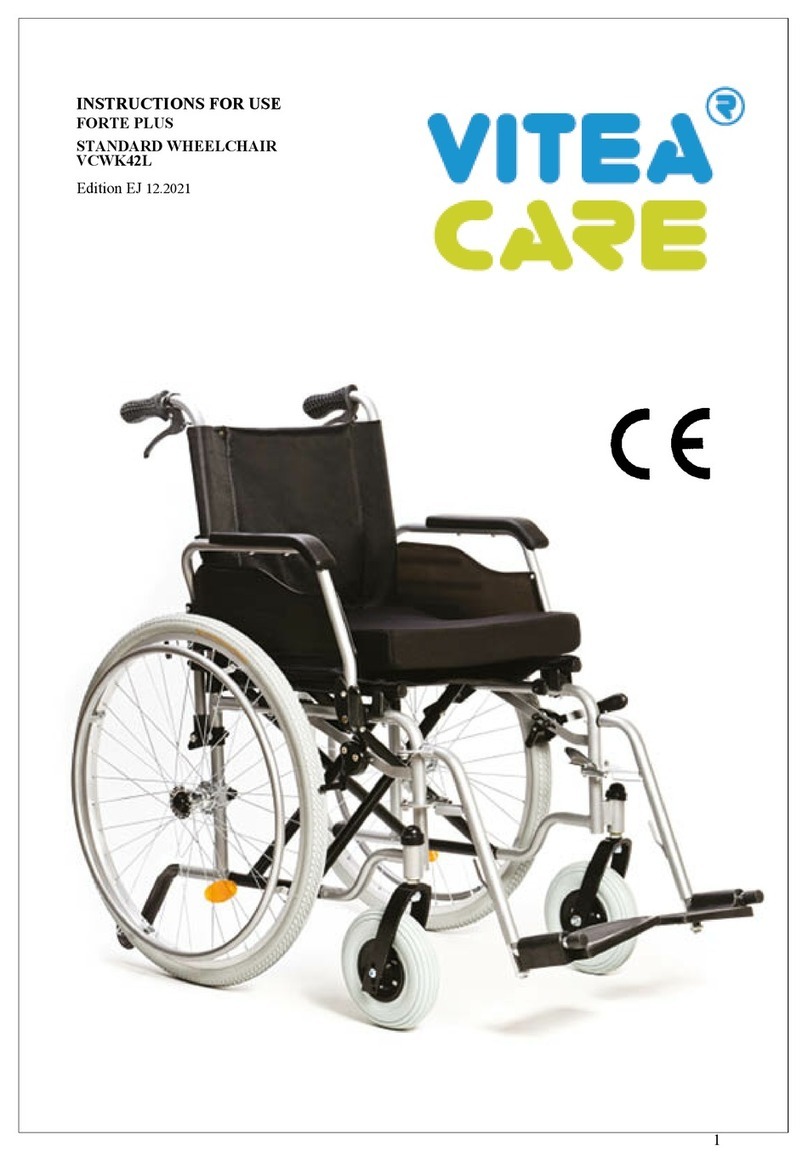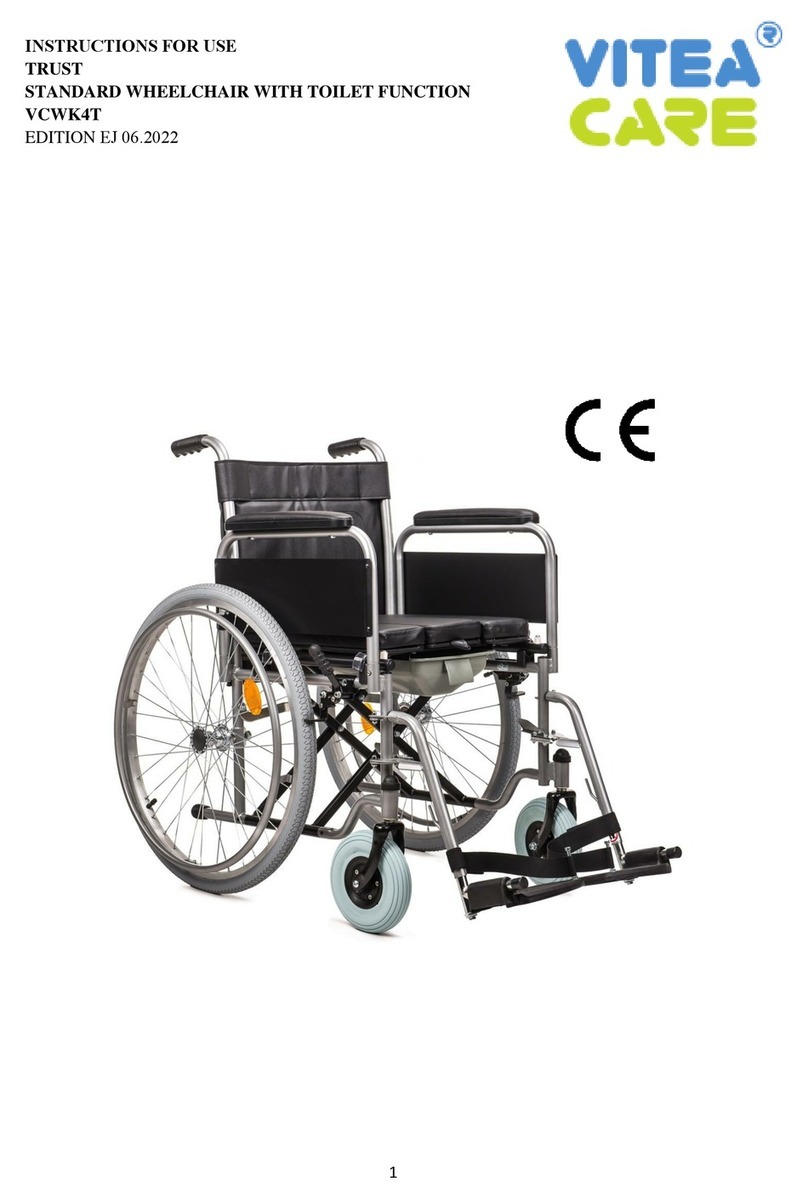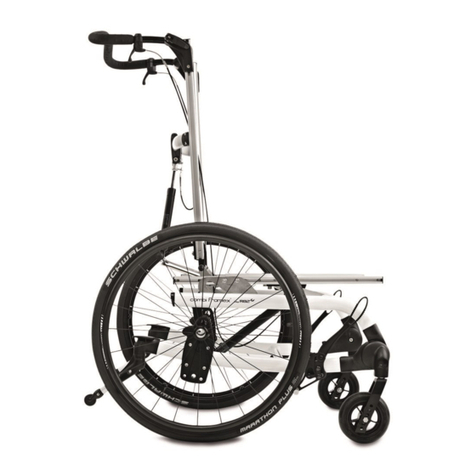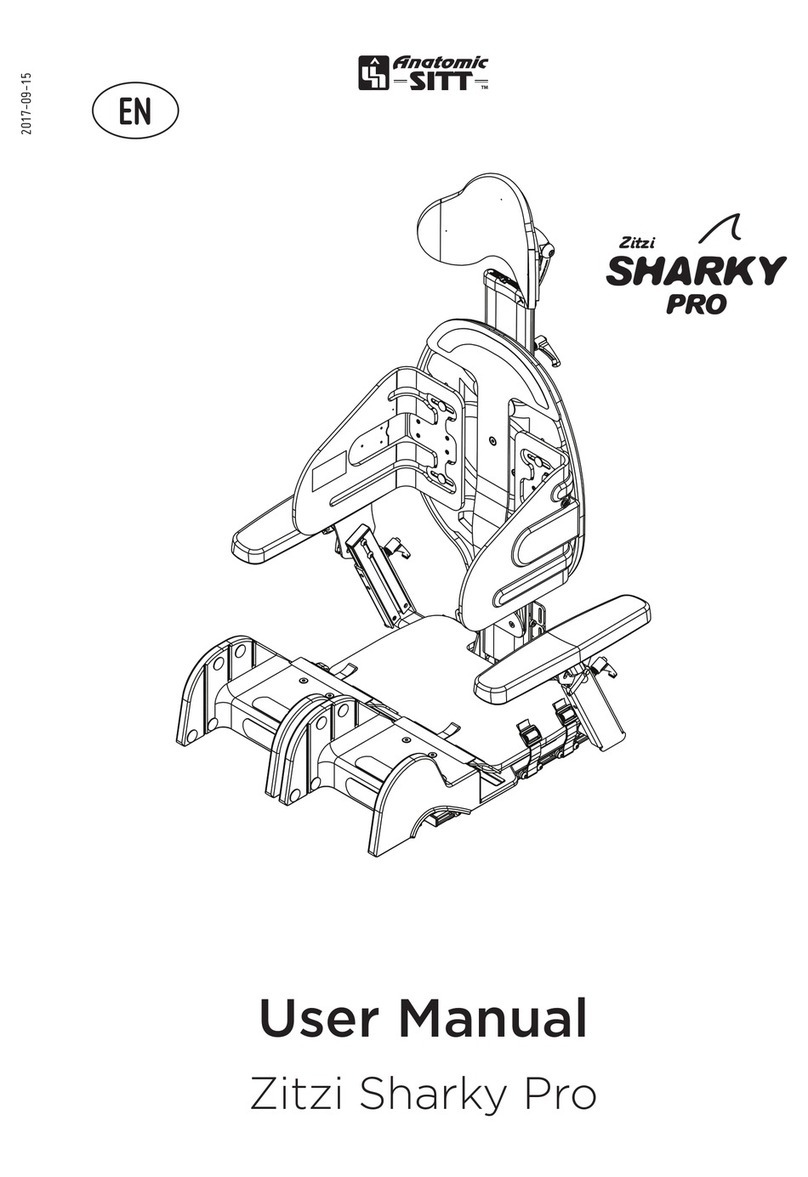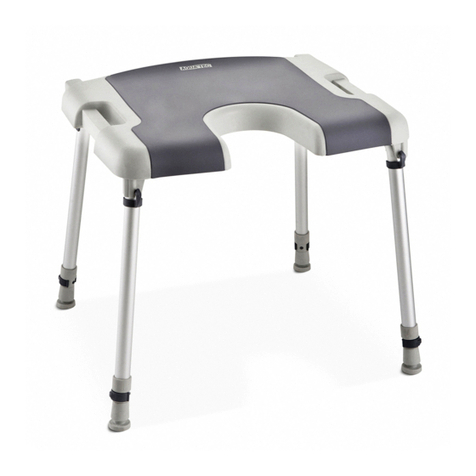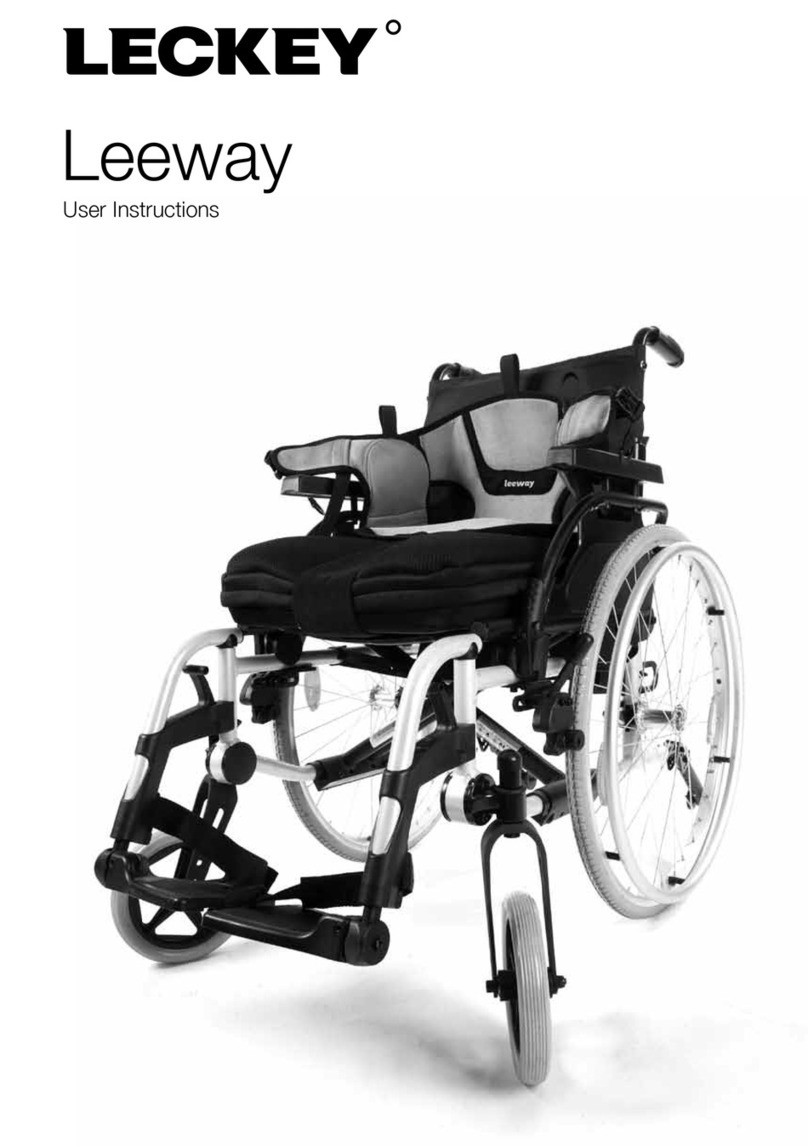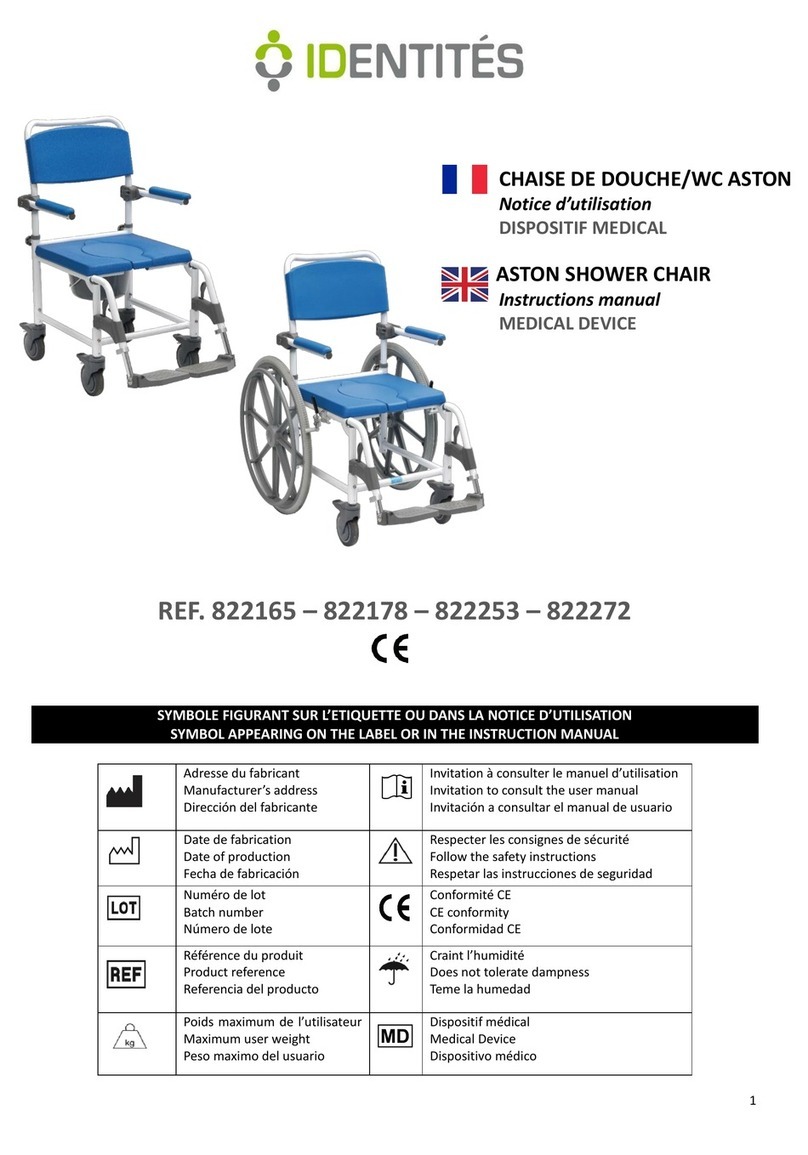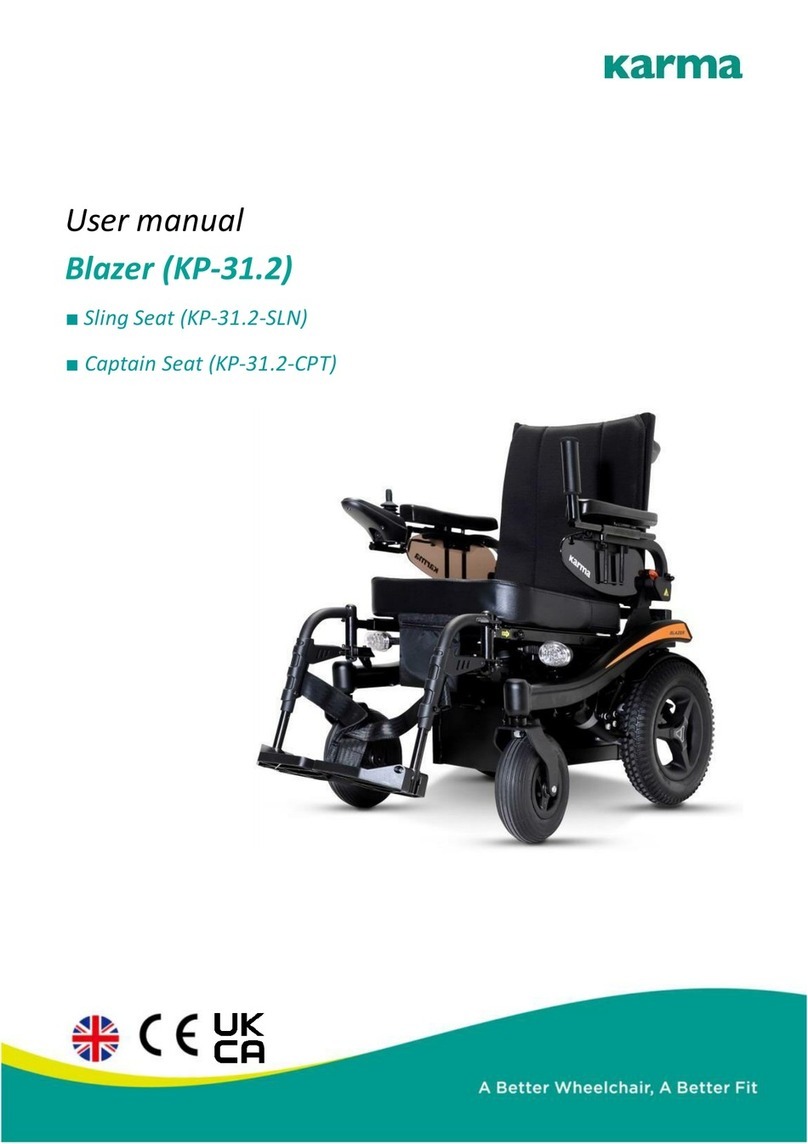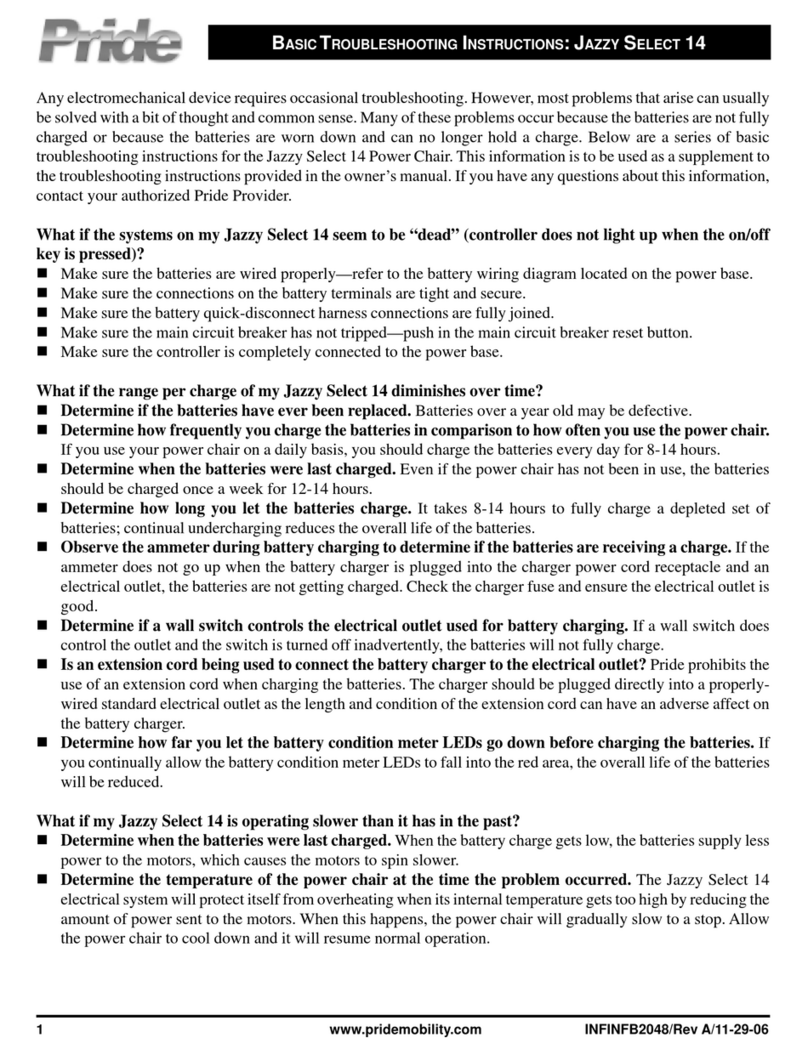
16
dwóch zaworków przedstawionych na ilustracji
17. i 18.
•Zawór Presta ma równieżdodatkowąmałą
nakrętkę, którąprzed pompowaniem należy
poluzować.
•Po zidentyfikowaniu zaworu należy
przygotowaćpompkęprzeznaczonądo
zainstalowanego w wózku rodzaju zaworu.
•Większość nowych pompek wyposażonych jest
zarówno w obsługęzaworu typu Prest jak i
Schrader. Wiele z nich pozwala na odwrócenie
końcówki. Mniejszy otwór skierowany na
zewnątrz będzie dotyczył Presta, większy
Schrader’a. Jeśli pompka nie obsługuje Presta,
trzeba będzie wyposażyćsięw „adapter Presta”,
który dostępny jest w każdym sklepie
rowerowym.
•W tym momencie, jeśli koło zaopatrzone jest w
zawór Presta, konieczne będzie odkręcenie
nakrętki znajdującej sięna wentylu. Jest to mała
nakrętka, która powinna daćsięodkręcić
palcami. W momencie wykonywania tej
czynności nakrętka powinna przesuwaćsięku
górze. Wówczas zawór uważany jest za
otwarty.
•Następnie należy zdjąć plastikowy kapturek z
zaworu i odłóżw bezpieczne miejsce. Ważne
jest, by go nie zgubić, ponieważzawory będą
ulegaćzabrudzeniu, co doprowadzi do trudności
w pompowaniu oraz szybszej utraty powietrza.
•Przyłożyćdyszępompki do zaworu i sprawdź
czy właściwie przylega. W razie potrzeby
wskazane jest przyciśnięcie pompki do zaworu,
by powietrze nie uciekało na boki.
•Jeśli pompka posiada dźwignięz zaciskiem
przy dyszy należy zacisnąć ją. Jeżeli dysza
pompki oraz zaworu posiadająnagwintowaną
końcówkęnależy je wzajemnie wkręcić. Dzięki
temu powietrze będzie wpadało prosto do dętki,
a dysza nie odczepi sięz zaworu.
•Przystępując do pompowania, należy sprawdzać
okresowo, jak duże jest ciśnienie w oponach.
Najlepiej robićto, poprzez ucisk opony
kciukami na końcu bieżnika. Jeśli możliwe jest
zrobienie jedynie milimetrowego wgięcia,
oznacza to, że w oponie jest wystarczająco
powietrza. W razie potrzeby należy
kontynuowaćpompowanie.
•Po zakończeniu pompowania, należy wyjąć lub
Illustration 17 and 18.
•Presa valve also has an additional small top,
which must be loosened before pumping.
•After identifying the valve, prepare the
pump designed to valve type.
•Most of the new pumps are equipped to
service both Prest valve and Schrader. Many
of them let to reverse the tip. Smaller hole is
Prest valve, Schrader valve greater. If the
pump does not support Prest, you will need
to buy yourself the "adapter Prest", which is
available at any bike store.
•At this point, if the wheel is provided with a
valve Prest, it will be necessary to unscrew
the top located on the vent. It is a small top,
which can be unscrewed with fingers. When
doing this, the top should move upwards.
Then valve is considered open.
•Then remove the plastic top from the valve
and set it aside in a safe place. It is
important to not lose it, because the valves
will get dirt, leading to difficulties in
pumping and rapid air loss.
•Place the nozzle of the pump to the valve
and check if it stick properly. If it is needed,
push the pump to the valve to make sure that
the air does not escape to the sides.
•If the pump has a lever with clamp at the
nozzle, tighten it. If the nozzle of the pump
and valve have a threaded tip, screw them
together. As a result, air will be streamed
directly to the inner tube and the nozzle can
not be detached from the valve.
•At the begining of pumping the pressure in
tyres should be checked at some points.
Check tire pressure with your fingers at the
end of the tread. If it is possible, make only
a millimeter indentation. It means that the
tire has enough air. If necessary continue
pumping.
•After pumping, remove or unscrew the nozzle
from the valve outlet while compressing it's
ends by thumb. It is recomended to do this quick
enough in order to not loose too much air.
•For Prest valve, tighten previously loosened






















